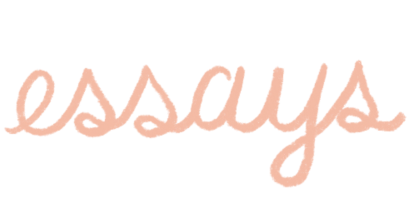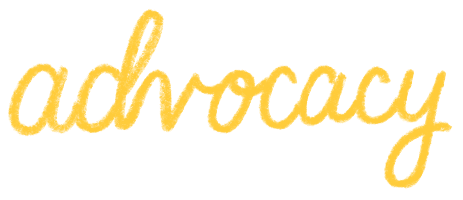“Only the best is good enough for a child” -Zoltan Kodaly
Welcome! Here at Music Lit we are passionate about bringing the highest quality learning experiences to your child. With an early childhood friendly, research-based approach, our resources are not only highly engaging for your child but also highly effective. These materials have seen real use with real students, and helped over 500 students learn to read, and more importantly love music. Blending the best of several music and educational methods, and refining the materials so that they are developmentally appropriate for your child is our number one priority.
Children are brilliant, and they deserve the absolute best. Let’s work together to share our beautiful and diverse musical heritage with them.
– Lauren Olson, founder
BA music education and elementary education
MEd early childhood education
Kodaly certified, levels I, II, III
SongWorks level I
NAfME member
NAfME Vice President board member, 2014-2015, BYU collegiate chapter
Combined 11 years of teaching experience
FAQ
Why is music important in our modern world?
Music is our heritage. It is who we are. When we teach a child to love and understand music, we are educating the whole child. Music has a place in our world, in our classroom, in our homes. Always.
Why singing?
Your voice is a built-in instrument that you have with you at all times! Before learning to play an instrument, it is essential to orient the ear to singing in tune and having a basic understanding of your voice and basic rhythms and melodies
Why folk songs?
We have a rich musical heritage that has been around for thousands of years. These songs are a part of us, and not only do we connect to our roots by keeping these songs alive, but they have such rich teachable elements in their simple melodies. Rhythmic or melodic elements can be isolated and explored. The songs also have wonderful games or activities that are a delightful part of the musical experience, a built in motivator that connects the child to the song.
What will my child learn from these materials?
At the beginning, it is our sincerest hope that these materials will instill a love for music and a joy for singing. At the rght time, these songs can be used to learn or reinforce rhythmic and melodic concepts. These simple songs have rich teaching opportunities, and can be used in so many ways.
What age are these materials suitable for?
The magic of these folk songs is that they are for everyone! Sing them softly to your baby, play the games with your kindergartner, work through the rhythmc elements with your 9 year old. By modifying the presentation, these songs are for your whole family. When applicable, the lesson or materials will notate what age the activity is intended before, but feel free to modify to meet your child’s needs.
Why do we need to sing these songs so high?
When singing to your child, use a high, clear voice. Their voice is still developing and it is important that they use the high part of their voice to maintain vocal flexibility, as well as to train the ear to sing in tune.
My boy can’t/shouldn’t sing that high?
Singing in their high clear voice is especially important for pre-puberty boys. The more they use their high clear voice before it changes, the more flexibility they will have after it changes, ranging from a deep and low chest voice to a high and clear falsetto. Please allow your children, especially the boys, to use the voice that is developmentally appropriate and healthy for them.
I can’t read music, is that going to be a problem?
Not a problem at all! Each song book includes a QR code with a simple voice recording, you can learn the song before singing through the song book with your child.
I can’t sing in tune, how can I sing with my child?
If you notice that you or your child are not singing in tune, the two best exercises are to engage in vocal play (sliding up and down the voice, silly stories, etc.), and more singing! The more you use your voice, the more confident you will become.
What materials do we need to get started?
At the beginning, all you will need is your voice! Singing through these folk songs is a joy and a connection to our rich musical heritage. As your child progresses, if you decide to enroll in the course, you will need materials specified in the outline (All provided in the course).
What age should we start?
Zoltan Kodaly says that a child’s education begins 9 months before the mother’s birth. Essentially, music belongs in every stage of our life. Lullabies, song games, and so on. Enojy these rich musical experiences as a family, always.
When should my child learn an instrument?
Different people will say different things, but in general, there’s no rush. It is suggested to first be able to sing in tune and understand basic music concepts like beat, simple rhythmic elements, and so on. If your child is interested in learning an instrument, follow their interest, but understand what is developmentally appropriate for their age and stage. Follow the child.
Who’s Zoltan Kodaly, and why does he matter?
Kodaly was a Hungarian musician, composer, and educator. He created a system of teaching music to children that used the native folk songs of their country. These songs that they already knew became a “music language,” or a “mother tongue”–so ingrained in them that they already have a strong foundation on which we as parents and educators can build. We honor his work and continue to incorporate best practices to ensure that we offer the highest quality learning environment and strategies that we can for our children. After all, “Only the Best is Good Enough For a Child.”
Who’s Maria Montessori, and why does she matter?
Maria Montessori was an Italian doctor and educator who took the time to understand how children develop and function. Her work shows us the importance of following the child, as well as the importance of the prepared environment. We incorporate her work and research into what we do here.





